#aitvarai
Text
I want to make information on Lithuanian folklore in English more public so I am uploading the threads that until now were only on my Twitter. I present to you a comprehensive thread on aitvarai, the ancient Lithuanian deities of the skies
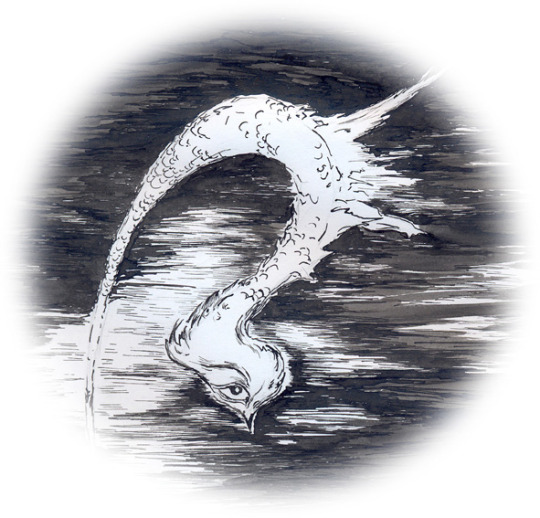

(art credits: Neringa Meškauskaitė, Agroshka )
Aitvarai (etymologically "ones to appease" or "irrepressible force") are domestic creatures associated with all 4 elements: a comet of fire which harnesses wind for chaos, helping Earth and its people while being chased and punished by Perkūnas for stealing water.
Most commonly a black rooster, they can appear as a variety of creatures: different kinds of black birds, grass snakes, whirlwinds, comets and even men if they fall in love with a woman that they want to marry.
Though very powerful ancient beings, Aitvarai choose to associate themselves with people, with villagers being able to either hatch them from an egg of a 7 year old rooster or attract them by leaving out hot, untouched meals like porridge and scrambled eggs.
When part of a household, the duties of an aitvaras were to bring riches to his caretakers, either as money (money carrying aitvarai were golden, deep red or silver in coloration) or as wheat (grey and black colors). Note that aitvarai only served the poor, tricking the wealthy people who tried to use them.
Aitvarai were both a blessing and a curse: while they did bring wealth, they did it by stealing from the neighbors of their master, making them most hated in the local village. They were also clingy and dangerous to keep, burning down the houses of those who mishandled them by feeding them manure, tampering with their meals or disobeying the rules they set for the person.
It is said however that their thieving, evil nature was a characteristic given to them by the Catholic church, which wanted to demonize every pagan creature in Baltic mythology.
In fact, aitvarai were considered genuine problems by those who believed that they would steal from them: from warding off statuettes in granaries to court cases from 1700's accusing people of harboring an aitvaras (I found only one source claiming this, so take it with a grain of salt).
However, the desire to have an aitvaras was apparent as well, shown by modifications peasants would make to their homes: holes in the doors of granaries would be made so an aitvaras could enter the home easily.
Some rituals for stealing back from a flying aitvaras exist as well, ranging from simply showing it your bottom, to cutting oneself with a rusty knife, pinning the corner of your jacket to the ground, ripping or otherwise ruining clothing.
Even if the reaction of people to them was mixed, aitvarai were considered pests by the gods due to their tendency to drink/hoard water, for which they were struck dead by Perkūnas, exploding into sparks that caused forest fires, the thunder god's lightning forming ponds, holes and swamps, terraforming the earth.
#lithuania#mythology#folklore#lithuanian folklore#lithuanian mythology#aitvaras#aitvarai#eastern europe#Viltės threads
163 notes
·
View notes
Text
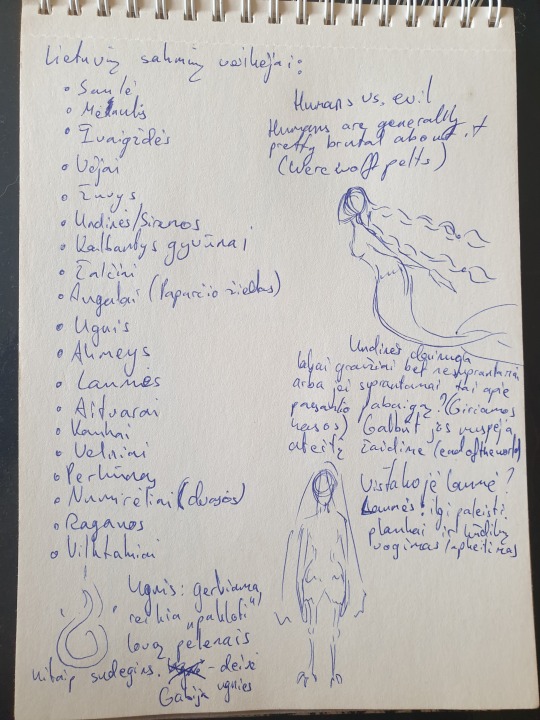
Lietuvių sakmių veikėjai:
Saulė, Mėnulis, Žvaigždės
Vėjai
Undinės, Sirenos, Žuvys
Kalbantys gyvūnai
Žalčiai
Augalai (Paparčio žiedas)
Ugnis
Akmenys
Laumės
Aitvarai
Kaukai
Velniai
Perkūnas
Numirėliai, Dvasios
Raganos
Vilktakiai
1 note
·
View note
Text
Andrius Miežis
ANAPUS LAIKO IR KONTROLĖS (drobė, akrilas. 70x70 cm. 2011m)

DIDYSIS BŪM PADARĖ MUS VISUS (drobė, akrilas, 90x130cm, 2008m)

DU APSIVOGE AITVARAI SUGAUTI PARKE (drobė, akrilas, 80x130cm, 2007m)

"Pasaulio pabaiga" (drobė,akrilas. 90x130cm. 2012m)
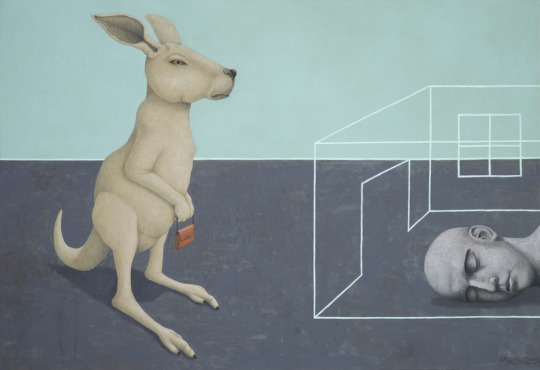
"Aš tavo sapnas" " 90x130cm, drobė, akrilas, 2013m
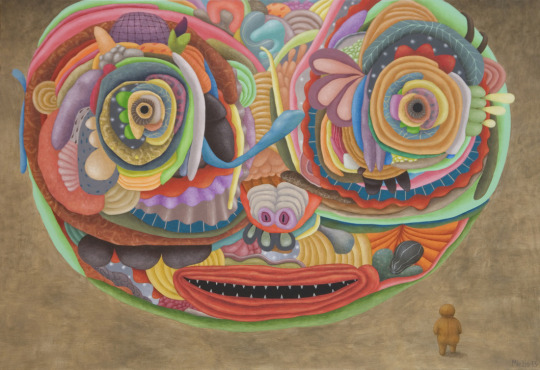
Daugiau darbų čia
11 notes
·
View notes
Text
Puikus up down. Šitaip skrajoja susitikusieji anapus. Vaikiškieji aitvarai, vasarinės plaštakės, planetos, pienių pūkai. Šitaip skrajoja pasaka, rimčiausioji nesąmonė, kuri tik žmogui priklauso.
13 notes
·
View notes
Text
VISKO
[chorus 1]
Kai nori daug, o tiek nėra,
pati pradžia – kaip pabaiga.
Kantrybė senka, atminty sausra,
kvėpuojant dega – tai dilema.
[verse 1]
Buto, ne prabangaus, bet kad patogus ir madingas būtų,
kratyti pelenus nuo lubų antresolės,
kad visos trys namuose turėtų savo roles,
grynos kaip sniegas kokos ir užsigerti kolos.
{ Visko! }
Žolės stiprios kaip viskio
ir pinigų kad vis įkristų be darbų,
jei neminėjau – dar labai geidžiu meilės be kalbų,
nepaisant visko pakilt virš debesų, nevaikščiot tarp žmonių.
{ Visko! }
Važinėti greitai ir lėtai, išskrist ilgam ir laikinai,
atostogų, kad pailsėčiau nuo atostogų,
ir etikečių – kad galėčiau heitint ištisai
ir po to vis tiek pakiltų aitvarai.
{ Visko! }
Kabrioleto atviro ir vidurinio piršto
kiekvienam atvejui, parodyt jį senatvei
ir likti pagrindinėj gatvėj, kur minios paauglių,
kurių aš nekenčiu, kuriuo ir pats esu.
{ Visko! }
[chorus 2]
Jis visko ieško, neranda nieko,
ir net, jei rastų – tikrai pamestų.
Jei netikėtų – vėl atidėtų,
ir būtų visko daug daugiau.
[verse 2]
Kad būtų krūta ir tai niekados nepasibaigtų,
kad visos krūtys krutėtų tik aplink mane,
pasisodinčiau daržą rūtų ir laimingas būčiau
jame nerasdamas žibučių…
{ Arba ne! }
Kad sektųsi darbe nuobodžiame,
kad niekados neatsibostų kovos sostų,
o supratimas apie save ateitų geras iš postų
CV ir ekrane, užsikonservuot tobulume.
{ Arba ne. }
Nutraukt svajonių virtines, nebeišeiti pragare iš virtuvės,
progresą leveliais išsaugot žaidime,
nepatogius nukirpti, nuolat girtis,
ir kažkaip ramybę rasti lėkime.
{ Arba ne! }
Dar prieš laiką mirti, spėjus sąžinei karčius nudirti,
jai skaudžiai spirti ir skęst bjauriam atvirume,
nekęst ir būt nekenčiamu, bet nepamirštamu,
ir pasiskandint įžūlume.
{ Arba ne! }
[chorus 3]
Jis visko ieško, neranda nieko,
ir net, jei rastų – tikrai pamestų.
Jei netikėtų – vėl atidėtų,
ir būtų visko daug daugiau.
0 notes
Text
Zapyškio aitvarų festivalis sujungs vėją, žemę ir vandenį
#ZAPYŠKIS | Gegužės 11 diena Zapyškis vėl pakvies į įspūdingą šeimų šventę - aitvarų festivalį „Tarp žemės ir dangaus“. Šiemet į dangų pakilsiantys aitvarai bus ypatingi, nes juose bus įamžinti miestų, miestelių ir kaimų pavadinimai – taip organizatoriai paminės Lietuvos vietovardžių metus. ....
0 notes
Text
Išnaudojimo norma Lietuvoje – 180 proc. (!!!) (pagal Lietuvos Vyriausybės pateiktus duomenis)
Išnaudojimo norma Lietuvoje – 180 proc. (!!!) (pagal Lietuvos Vyriausybės pateiktus duomenis)
Straipsniu mėginama paprasčiau paaiškinti, kokie aitvarai suneša Lietuvos turtuolių dešimtukams ar šimtukams pinigus. Skaitmenų pateikta daugokai, tačiau jie tereiškia eurus ir darbo valandas. Tiems, kurie nemėgsta skaičių ir net paprasčiausių kapitalistinės politekonomikos formulių, siūloma paskaityti „Turniai lietuviai – ka yra“ *
Darbo žmonių išnaudojimą galima išreikšti procentais ir…
View On WordPress
0 notes
Text
Žadini kiekvieną rytą
https://grazus-sveikinimai.lt/?p=5879
Žadini kiekvieną rytą
Žadini kiekvieną rytą, Nes laukia geri draugai, Bėgame basi per pievas, Kai danguje pakyla aitvarai.
Autorė: Raimonda Taškūnaitė
0 notes
Text
Enough postponing, here's my attempt at making something comprehensive on one of the most varied creatures in Lithuanian folklore: laumės (Art credits: Marcė Katiliūtė)
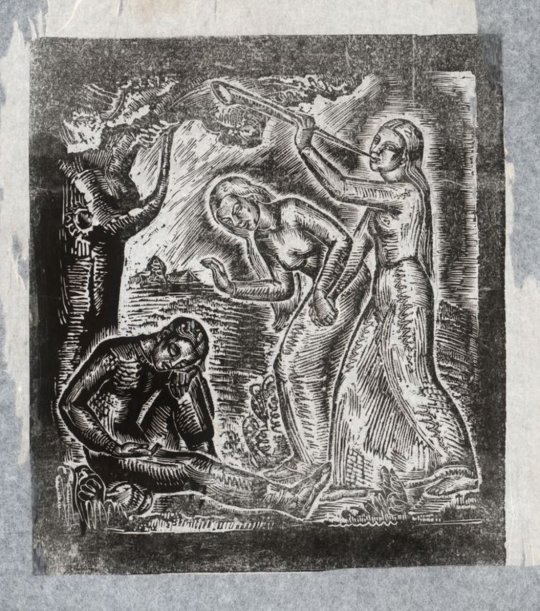
Basically, laumės are groups of humanoid women, connected with water, birch, night and the act of weaving. Primarily considered bridges between humans and gods, they inhabit forests while having the ability to summon rain and weave rainbows.They interact with people by bathing in saunas after everyone is gone. Appeased laumės are said to leave textiles as a reward for a clean, warm sauna or any offerings made to them. Their day is Thursday, just like Perkūnas' and they're most active during the night.
Now onto complicated stuff: there are many variations when it comes to laumės’ appearance. Age ranges from young to old, some are said to have metal nails, some have chicken feet and feathered bodies hiding under white clothes which let them interact with humans. The earliest depiction of laumės was in the form of a dove, the bird of Goddess Laumė, sometimes as goat-headed or horned women, bears, cats. They’re either depicted as incredibly alluring and sexual or grotesque and terrifying. Their views towards humans also change: they can be only dangerous to men, sometimes they’re most dangerous to babies, which they exchange for bundles of wheat in the crib, the bundles growing into laumiukai (similar to fae changelings) overnight. It is unclear what they do to the stolen babies. In some tales they're shown as very ruthless, uncaring of their safety, in others they're maternal, stealing out of desire for motherhood and accidentally killing the babies out of love. Sometimes they can be helpful to weavers, however this is achieved only after guessing a riddle or obeying a specific rule, on Thursdays. Even then, should a laumė run out of material, she'll weave in hair or intestines of the woman whose work she's finishing.
Overall, laumės can be called morally grey: they're wonderful seamstresses who gift their handiwork to humans, but at the same time deadly, being able to thinly slice and weave an entire person as if they were wool.
SPECULATION: Their origin is quite interesting. I think that there may be a tie between them and the matriachal goddess Laumė (shown below), who, after having a child with a human man, was "banished" to Earth by the new patriarchal gods but this is JUST my opinion that is not based off of any source and moreso speculative connections between Laumė and laumės
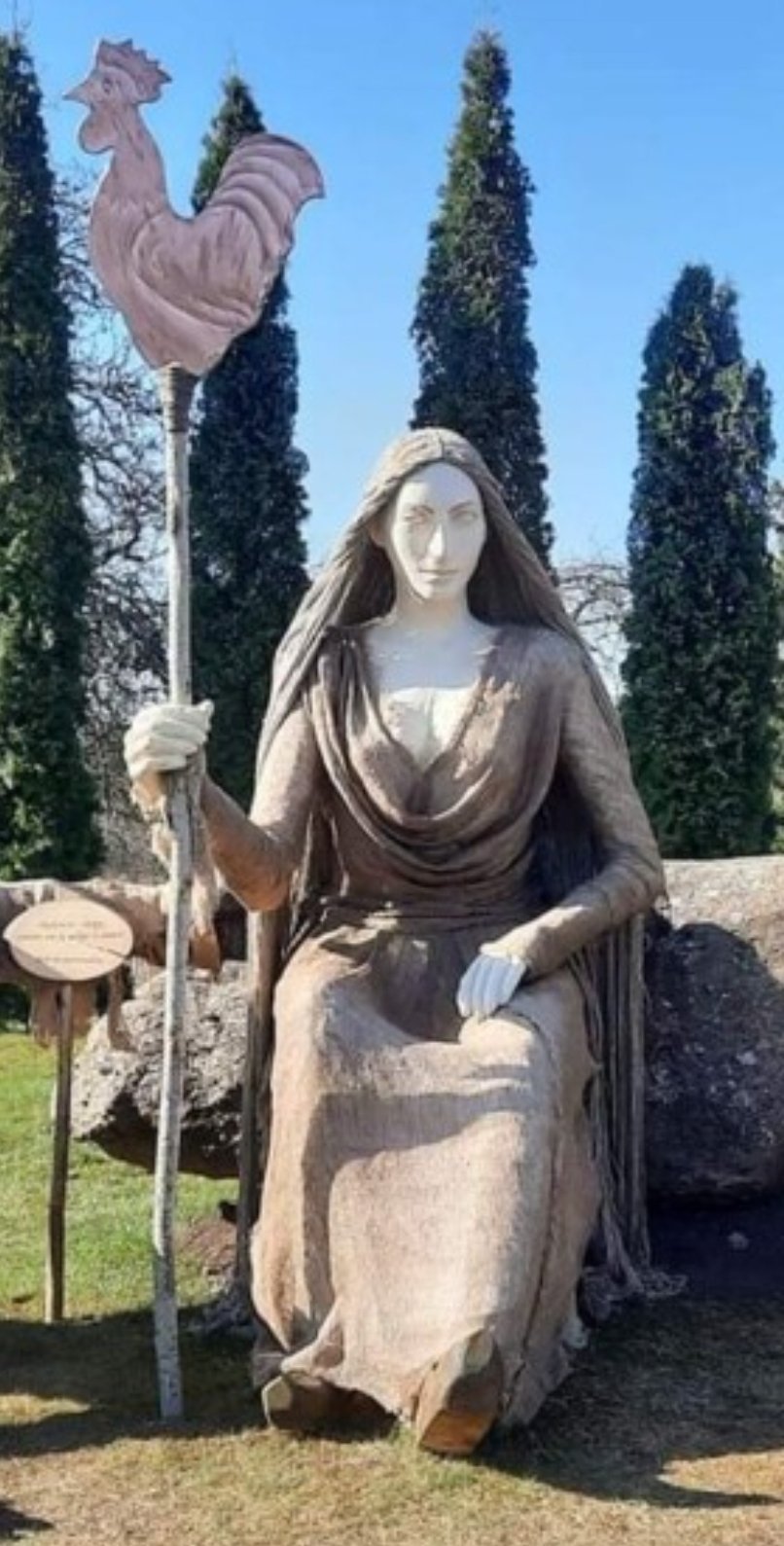
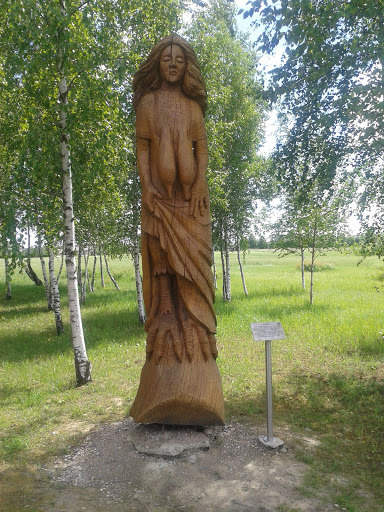
Laumės are associated with mistletoe and similar parasitic plants seen on birch trees, from which they like to swing. Some sources claim that the so-called “laumė broom” can banish laumiukai from a home when they're beaten with it. Their ties with bodies of water, by which they dance and summon rain and new moon are also apparent, as well as their specific fear of flax. Though beings with many variations, they are the most famous characters in Lithuanian folklore along with aitvarai.
#viltės threads#folklore#eastern europe#lithuania#lithuanian folklore#lithuanian mythology#mythology
61 notes
·
View notes
Text

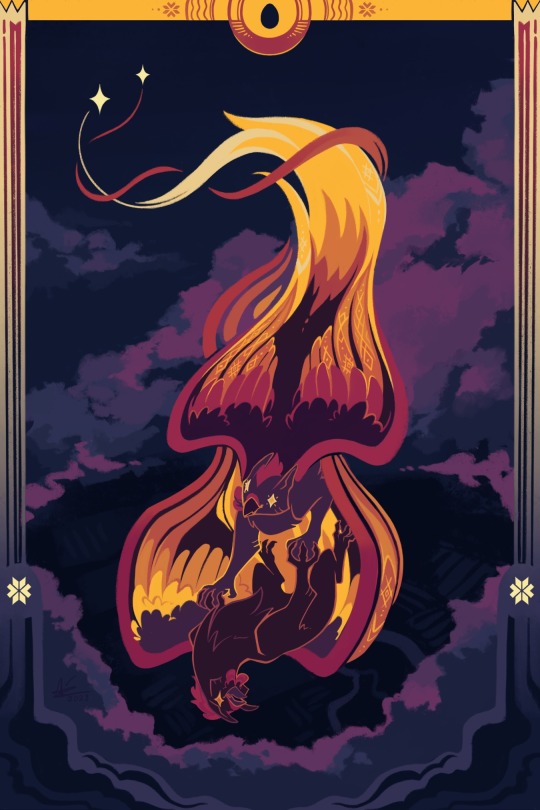
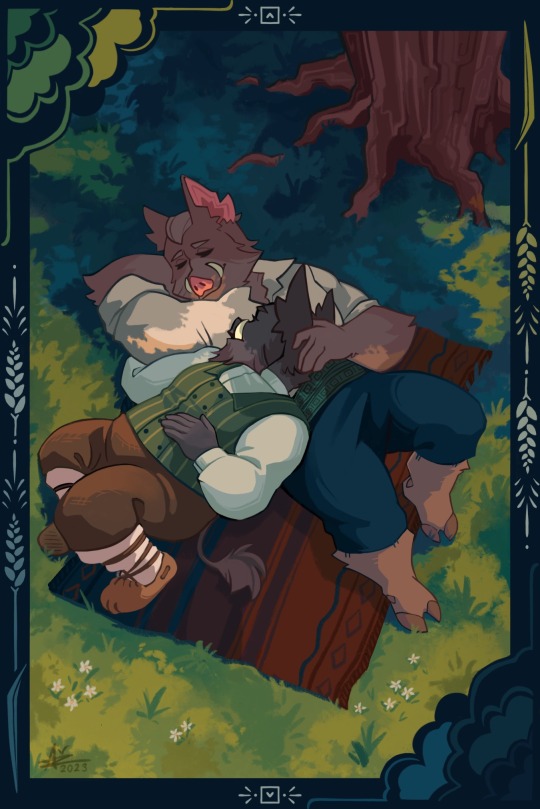
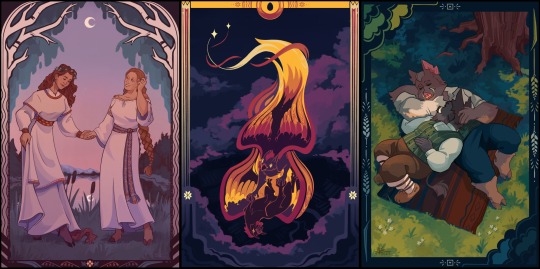
Since this is the last day of pride month, I’ve decided to upload my drawings here as well! It’s a three-part project combining LGBTQ+ with Lithuanian foklore: WLW laumės, NBLNB aitvarai, MLM kaukai. I hope everyone had a wonderful month (going to my first Pride tomorrow)
81 notes
·
View notes